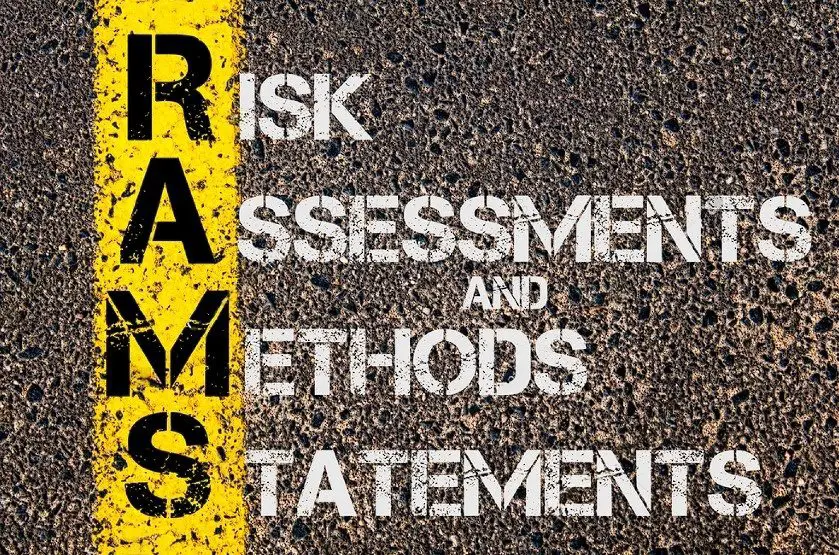Introduction
Two key documents used in construction planning are Method Statement and Risk Assessment and Method Statement (RAMS). These documents outline how work will be carried out on-site and identify potential hazards that need to be managed.
Construction projects are complex, and they involve a lot of risks. To ensure the safety of workers, as well as the successful completion of projects on time and within budget, it is essential to have a detailed plan that outlines all aspects of the construction process.
Table of Contents
Definition of Method Statement and RAMS
A Method Statement is a document that outlines how work will be carried out on-site. It includes details such as a description of the project scope and objectives, identification of hazards, risk assessment, work procedures, equipment required, quality control measures, and emergency procedures.
On the other hand, Risk Assessment and Method Statement (RAMS) is a more detailed document that combines the risk assessment process with method statement documentation. It includes all elements present in the method statement but focuses more on identifying hazards through risk assessment processes before presenting methods for controlling identified hazards.
Importance of Method Statement and RAMS in Construction Projects
Method statements play an integral role in ensuring safety at construction sites. They provide workers with clear guidance on how they should carry out their tasks safely.
This minimizes accidents at workplaces due to a lack of guidance or unclear instructions. Furthermore, method statements provide clarity on what is expected from each worker in terms of responsibilities while providing a standardized approach for carrying out tasks across different teams within the project’s life cycle.
Risk assessments are also crucial for identifying potential hazards before starting any work. Conducting thorough assessments ahead of time across all aspects involved in a project scope such as health & safety risks including physical risks like falls from heights or burns due to working with hot materials or potential risks like delayed project progress due to external factors, ensures that the necessary steps are taken to manage the risks and minimize the impact of any unforeseen events that could arise.
Purpose of the Outline
The purpose of this article is to provide a comprehensive understanding of method statements and RAMS. It aims to highlight their differences and similarities, as well as their importance in construction projects.
By outlining their key components, readers will be able to understand how these documents work together in ensuring safety on construction sites while also providing a clear workflow for project management teams. With this knowledge, individuals working in construction can apply these best practices to their own projects, resulting in improved efficiency and safety.
Method Statement
Definition and Purpose of Method Statement
A method statement is a document that outlines the work procedure for a specific activity or task in a construction project. It provides details on how the work is going to be carried out, including the equipment, materials, and personnel required.
The purpose of a method statement is to ensure that everyone involved in the project knows what is expected of them and understands the potential hazards associated with the task. A method statement serves as an important communication tool between different parties involved in a construction project.
It helps to clearly define roles and responsibilities, reduces confusion, improves efficiency, and promotes safety on site. Outlining each step of the work procedures and identifying potential risks associated with each step, helps to prevent accidents from occurring.
Components of a Method Statement
A typical method statement consists of several components that include:
- Description of the Project Scope and Objectives: This section explains what needs to be done in order to complete this particular stage of the project.
- Identification of Hazards and Risk Assessment: This section identifies any potential hazards associated with carrying out this particular task. Risk assessment procedures are put into place to evaluate these risks so they can be mitigated or avoided altogether.
- Description of Work Procedures: Detailed instructions are provided for carrying out each stage or step in this particular task. These instructions should specify who will do what, when they will do it, what tools/equipment are needed etc.
Details on Equipment, Materials, and Personnel Required
The details on equipment, materials, and personnel required section outlines all necessary resources needed for successfully completing this particular task or activity. Lists of all safety equipment used during work must be included as well as any personal protective equipment that workers must wear during their work activities such as hard hats or gloves etc.
It should also outline specific items required for the task such as heavy machinery or specialty tools. This section should mention any relevant safety certifications, qualifications, or experience required for personnel involved in the project.
Quality Control Measures and Emergency Procedures
The quality control measures section explains how the work will be monitored to ensure that it meets quality standards. It outlines procedures for assessing compliance with relevant regulations, codes of practice, or industry standards. Emergency procedures are also included in a method statement to ensure that everyone knows what to do in the event of an emergency.
These procedures describe how workers should respond to various types of emergencies such as fire, explosion, chemical spills, or medical emergencies. Workers must stay aware of these emergency procedures and training must be provided on updates of these emergency procedures when they occur.

Risk Assessment and Method Statement (RAMS)
Definition and purpose of RAMS
A Risk Assessment and Method Statement (RAMS) is an essential document that outlines the hazards, risks, control measures, work procedures, equipment, materials, personnel requirements, and quality control measures for a construction project. The primary objective of RAMS is to identify potential hazards in a work environment and to provide adequate control measures to mitigate these risks. The document also provides details on how work procedures will be executed to ensure compliance with safety regulations.
Components of a RAMS
The components of a RAMS include hazard identification, risk assessment, and control measures, work procedures to mitigate risks, equipment/material requirements for implementing control measures as well as personnel requirements. A detailed description of the contents is as follows: Identification of hazards: This section identifies all potential hazards associated with the construction project.
Risk assessment: The risk assessment part uses various tools such as probability analysis or impact assessments to determine the likelihood of a hazard causing harm. Control measures: This section outlines all necessary precautions that need to be taken in order to reduce or eliminate the identified risks.
Work procedures: This part explains how work will be carried out while avoiding identified risks. Work procedures may include task-specific protocols or wider project guidelines.
Equipment/materials requirements: All necessary equipment/materials required for implementing the controls are listed here. Personnel requirement: Any skilled labor required beyond those normally employed by the contractor are outlined here.
Quality control measures to ensure compliance with safety regulations
Compliance with safety regulations requires continuous monitoring throughout a project’s lifecycle. Quality control measures are put in place at various stages during construction projects in order to prevent accidents or incidents from occurring due to non-compliance with regulatory standards. These quality-control checks can occur at multiple stages; from verifying personal protective equipment like hard hats and safety boots are being worn correctly, to double-checking that equipment is serviced and maintained as necessary.
It is important to note that RAMS should be reviewed regularly throughout the project lifecycle, with checks for compliance with safety regulations made at key milestones. This will help ensure maximum effectiveness from RAMS in reducing and preventing risks.
Differences between Method Statement and RAMS
Scope
One of the main differences between a Method Statement and a Risk Assessment and Method Statement (RAMS) is their scope. A Method Statement outlines work procedures, steps to be taken, equipment required, personnel involved, quality control measures, and emergency procedures. It focuses on how the work will be carried out in a safe manner.
On the other hand, RAMS primarily identifies potential hazards that may be encountered during project execution. Besides identifying hazards, the document also assesses risks associated with them and outlines measures that can be taken to mitigate or control risks.
Content
Another difference between a method statement vs RAMS is content. A method statement provides details on how work will be carried out while RAMS focuses on safety procedures to put in place when executing tasks identified in the method statement. Therefore it is important for them to complement each other so that there are no discrepancies between what’s written in each document.
Implementation
Method statements are used by both workers and supervisors as guidelines for carrying out specific tasks safely while adhering to basic construction regulations. On-site training may also occur before beginning work so that everyone involved has an understanding of what they need to do. Risk assessments are typically completed by management staff who have experience or training in occupational health and safety and environmental matters because they require more specialized knowledge about potential hazards associated with construction sites.
Similarities Between Method Statement And RAMS
Purpose of Documentation
Both documents serve an essential purpose during construction projects as they outline how work should proceed safely while minimizing negative impacts on workers’ health and the environment.
Risk mitigation
Both documents aim at reducing risks associated with specific project activities or practices as well as managing these risks if they should occur. RAMS has a more detailed focus on risk assessment, mitigation, and control measures compared to method statements.
Overall Complementarity of Method Statement and RAMS
The goal is not to compare but rather to present the complementarities of both documents. They may seem like two distinct documents, but they are essential in construction projects as they complement each other. A method statement outlines work procedures that need to be followed while RAMS identifies potential hazards and risks associated with specific tasks.
Conclusion
Understanding the differences between Method Statement vs RAMS documents is crucial for anyone involved in construction projects. These two documents complement each other, with one outlining how to execute work safely without negative environmental or worker impact while the other identifying potential hazards and outlining procedures that can mitigate or control these risks.
They are both necessary for safe and effective project execution by providing guidelines on how to complete tasks safely and efficiently. Therefore, it is important for workers, management staff, supervisors, and contractors working on construction projects always refer back to these documents when executing their duties at any given point in time during the project period.
tag: Method Statement vs RAMS

